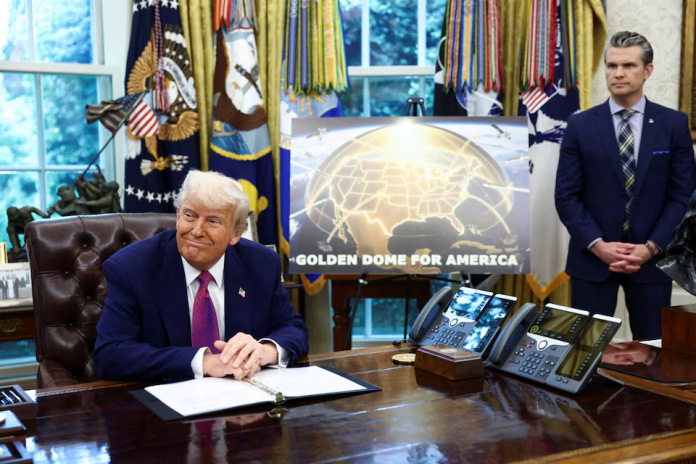US President Donald Trump announced a $175 billion, three-year plan to develop the Golden Dome missile defence system, pledging to create a comprehensive shield against ballistic, hypersonic, and space-launched threats, Politico reported.
The initiative aims to integrate space-based sensors, ground interceptors, and advanced software to neutralise attacks “even if launched from the other side of the world.”
It will be capable of intercepting missiles launched from the other side of the world. Even if they’re launched from space.
Trump named Space Force General Michael Guetlein, the service’s vice chief, to lead the project, citing his expertise in missile defence and procurement. The Golden Dome will combine existing Pentagon systems with new technologies, including satellites for early detection and space-based interceptors to destroy missiles during their boost phase.
The president claimed the shield would be “fully operational” by January 2029, coinciding with the end of his second term. However, this timeline conflicts with a Congressional Budget Office (CBO) estimate projecting costs of up to $831 billion over two decades for a truly comprehensive system.
Funding hurdles and industry involvement
However, the project has already faced significant legislative challenges. The $25 billion “downpayment” is tied to a broader $150 billion defence package opposed by both Republicans and Democrats over transparency concerns and fears of escalating global arms races.
Front-runners for contracts include SpaceX, Lockheed Martin, and L3Harris Technologies, though critics question the influence of Trump ally Elon Musk’s firms.
Gen. Guetlein acknowledged organisational and bureaucratic hurdles, comparing the project’s scale to the Manhattan Project. Technical obstacles include integrating radar systems operating in contested electromagnetic spectrum bands and ensuring interoperability between legacy and new technologies.
Global and domestic implications
Canada expressed interest in joining the initiative, with Trump asserting they would “pay their fair share”. Domestically, states like Alaska, Indiana, and Florida are poised to benefit from manufacturing contracts, with L3Harris already expanding facilities in Fort Wayne, Indiana, for hypersonic tracking satellites.
Democrats and arms control experts warn the system could destabilise nuclear deterrence frameworks, while Senate Republicans like Kevin Cramer champion its potential to foster competition among defence contractors. Despite scepticism from analysts about an “impervious shield,” the project is seen as a catalyst for advancing space-based defence capabilities.
Trump framed Golden Dome as fulfilling Former US President Ronald Reagan’s unrealised Strategic Defence Initiative, declaring it would “forever end the missile threat to the American homeland.” Yet, with funding uncertain and technical complexities unresolved, the initiative remains as much a political statement as a strategic blueprint.
